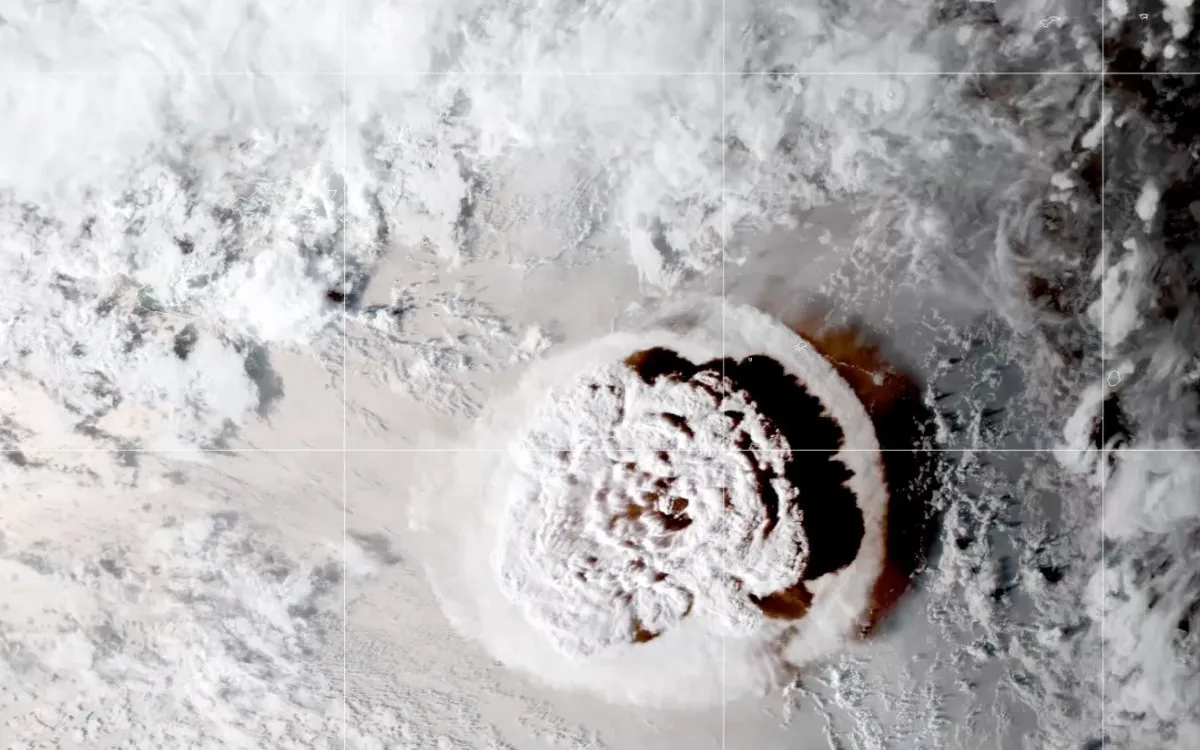
In 2022, the Hunga Tonga-Hunga Ha‘apai volcano erupted in one of the most powerful volcanic events recorded in modern history. This spectacular explosion not only sent a massive plume of ash and gas soaring over 31 miles (50 kilometers) into the atmosphere, but it also created significant waves in space. The eruption’s intensity was so extreme that it broke through the typical altitude range where commercial jets fly and where most weather patterns exist.
What truly astonished scientists was that the impact of this eruption extended far beyond the immediate vicinity of the volcano. The ripple effect generated by the explosion traveled all the way to the upper atmosphere, affecting the region where satellites orbit the Earth. A new study published in AGU Advances sheds light on how this enormous eruption impacted parts of the atmosphere that are typically unaffected by volcanic activity.
Researchers utilized satellite data and sophisticated atmospheric modeling to identify two main types of waves responsible for this phenomenon: lamb waves and secondary gravity waves. Lamb waves are pressure waves that closely follow the Earth’s surface, while secondary gravity waves are produced when the initial wave energy disperses at high altitudes. The findings revealed that the secondary gravity waves were primarily responsible for the observed disturbances, as their rapid movements and greater magnitudes aligned more closely with satellite data gathered during the event.
Essentially, the Tongan eruption generated a shockwave so powerful that it reverberated through the upper atmosphere. This groundbreaking study adds to previous research that highlighted the eruption’s subtle seismic signature—a Rayleigh wave—which was detected by seismometers located over 400 miles (644 kilometers) away, even before the eruption took place. This wave, imperceptible to the human senses, served as a rare and often overlooked indicator that a catastrophic event was imminent.
Collectively, these studies underscore the notion that significant volcanic events can have far-reaching impacts, shaking not just the ground but also the entire atmosphere, extending from the seafloor to the edge of space. Scientists are beginning to recognize that Earth’s most violent eruptions may leave behind multiple early fingerprints, provided we know where and when to look for them. This understanding could revolutionize our approach to monitoring volcanic activity and predicting future eruptions.